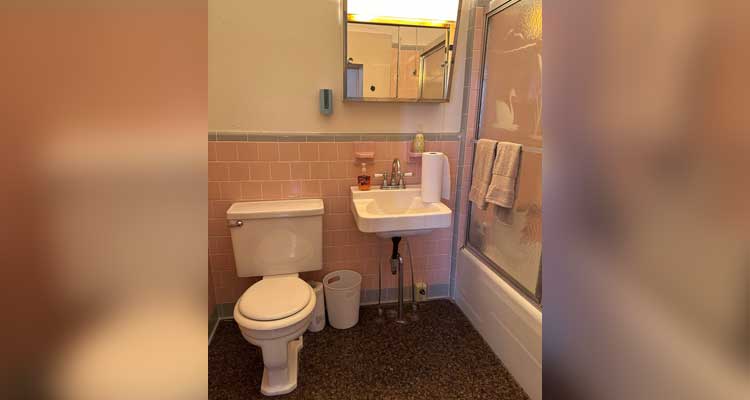It is an undeniable fact that when we discuss historic restoration, we invariably ignore the bathroom. The very idea we would consider keeping any older version of one is not possible. Older bathrooms have rusty plumbing and squeaky pipes. Some have broken tiles and faded carpets. And every fixer-upper in HGTV history takes time to let a horrified homeowner bask in the glow of an all-pink tiled nightmare.
So, it’s pretty rare to see a beautifully renovated historic home with a bathroom that matches. We’ve seen lots of gorgeous bathrooms that appear to have historic fixtures and original sinks but really just have expensive replicas. Two-hundred-year-old chairs, Brazilian rosewood, and hand-painted ceiling tiles can be the norm on the outside of the restroom, but generally not in it.
Although it is rare, there are a few historic bathrooms out there. One of our personal favorites is in Milton, NC in the Old State Bank, or the Milton Renaissance Foundation headquarters.
If you haven’t been to Milton, it is a very small town on the Dan River with about 160 people. It is one of the oldest towns in the region; it was incorporated the same year John Adams won the presidency. As a growing mill town, like many others in the area, it was perfectly situated on the Dan River and had a thriving tobacco business. One of America’s most celebrated cabinet makers, Thomas Day, was based there, as well as a cotton factory, taverns, hotels, and two banks.
The Old State Bank in Milton today is no longer a bank and hasn’t been for some time. In fact, for some of its life span, it operated as a post office. But either as a bank or a post office, it is a very unusual building. Originally built in 1860, the bank occupied most of the first floor of the two story structure. The rest of the building was a residence for the bank’s manager. Allowing them to live above the bank provided an extra level of security in addition to the vault. As a result, the building has many beautiful and ornate details, like the Gothic Revival door and the banister, attributed to Thomas Day.
The building now serves as a museum for Milton and is filled with exhibits and information. And if you need to use the restroom? Well, that’s in the vault, of course. The previous residents of the building, Ola and William Walker, had it installed around 1966. Along with an incredibly heavy, cast-iron door, they kept the original barrel ceilings, and added a shower, toilet, and sink. It’s ingenious, really. And we can’t think of another historic building with a toilet behind a cast-iron door.
And before you ask, the bathroom is pink. Pink tile, of course. Enjoy.
